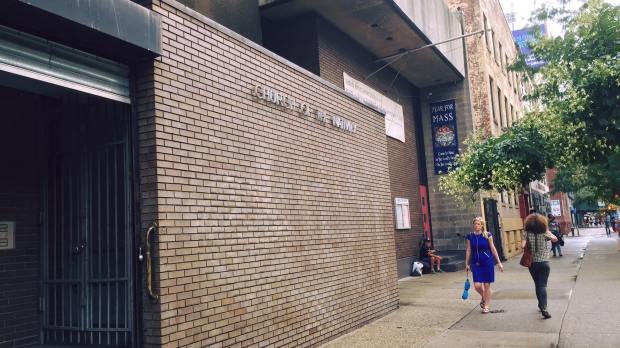A dozen Catholic churches in Manhattan and The Bronx could soon be sold now that the Archdiocese of New York officially declared they are no longer sacred sites for worship and can be used for “profane, but not sordid” uses. Some parishioners, however, are calling on the church to focus instead on using the shuttered buildings in the service of helping the poor. Most of of the sites on the list have been shuttered since 2015 or so when the Catholic church completed a major restructuring of its parishes, merging many of them together. Now some are also losing their schools, including St. Ann School in Norwood, Visitation School in Kingsbridge and St. Gregory the Great School on the Upper West Side. …[Mercedes] Sanchez fought to keep her church open a few years ago, appealing the closure and proposing that the rectory building at 44 Second Ave. be turned into a shrine or chapel in honor of Dorothy Day, the social activist who co-founded the Catholic Worker newspaper, or a drop-in center where the homeless could pick up mail or take showers. This was especially needed, she said, since the Archdiocese closed the nearby Holy Name Center for Homeless Men to open a theater. She learned in March that the proposal was denied. (Her current church’s pastor was proposing the Archdiocese build a low-income building at 44 Second Ave., she added.) Sanchez said she did not have any more fight left in her this time around to appeal the June 30 decree. “We fought pretty hard over the past two years or so,” Sanchez said. “I’m finally in a better place. I am Catholic. I go to church. It’s about your connection spiritually. But it was very discouraging.”
So what exactly does removing a church’s consecration entail? Here’s one explanation from the Rev. Edward McNamara:
In the past a church would lose its consecration or solemn blessing in two principal cases. One case was through the destruction of the greater part of its walls. But even in this case it was not desacralized if the walls were destroyed and rebuilt in several stages. Nor was it desacralized if new walls were less than the original. Another case is if the local bishop reduces the building to profane use, as is still foreseen in Canon 1222 of the Code of Canon Law, to wit: “§1. If a church cannot be used in any way for divine worship and there is no possibility of repairing it, the diocesan bishop can relegate it to profane but not sordid use. “§2. Where other grave causes suggest that a church no longer be used for divine worship, the diocesan bishop, after having heard the presbyteral council, can relegate it to profane but not sordid use, with the consent of those who legitimately claim rights for themselves in the church and provided that the good of souls suffers no detriment thereby.” This relegation to profane use takes place only after the bishop issues a formal decree removing the church’s dedication or consecration. The subsequent removal of relics, altar and other items of sacred art is a consequence of this decree, but not necessarily the cause of the building losing its consecration. In order for the decree to be valid, the bishop must first obtain the consent of any persons (juridical or physical) who can claim rights over the church. In practice this means the consent of the parish usually through the pastor unless the parish has already been suppressed. If the church or the land on which it is built is the property of a religious institute, then the consent of the competent religious authority is also required. In some rare cases a physical person might have a claim on a church such as a major donor whose grant was accepted on condition that the church would remain a sacred place for a certain period. The bishop must also determine that the proposed use of the place will not be sordid. This is a prudential judgment that can vary according to time and place. But every effort should be made that no unseemly activities should be allowed in the future. In at least one country in which the Church has had to close several relatively modern churches, it has preferred to have them demolished rather than turned over to unseemly use. This is not usually possible when closing churches that have significant architectural or historical merits. As far as possible the artistic treasures of relegated churches should find a new home in other churches in the diocese or in other Catholic domains. This is both a sign of continuity of the faith in spite of demographic changes and an act of respect for those generations who built the original churches with so much love and sacrifice. The beauty of no small number of modern church buildings has been greatly enhanced at relatively low cost by incorporating altars, stained glass windows, statuary, and other decorative elements from older no longer used churches.Photo: Friends of Nativity Church Facebook page

